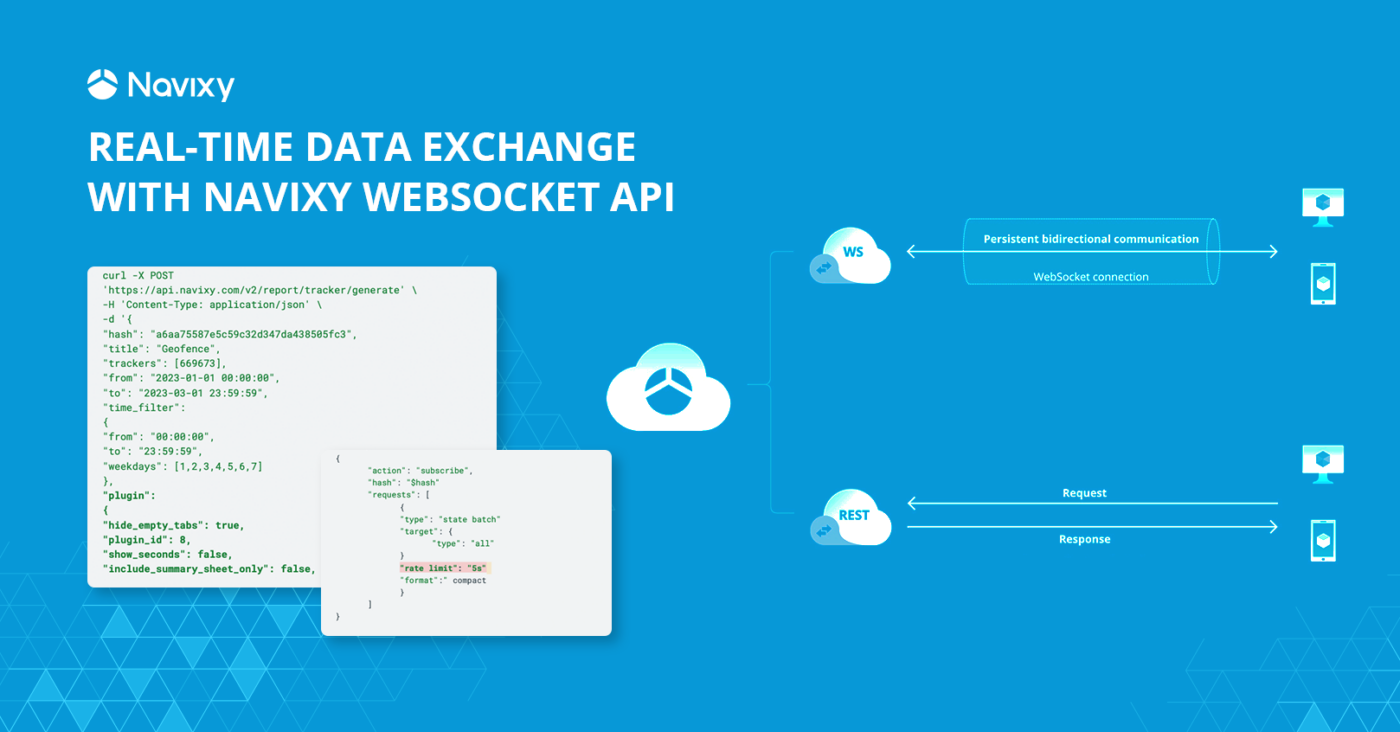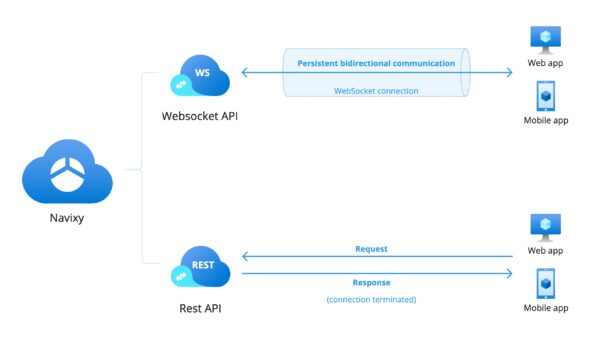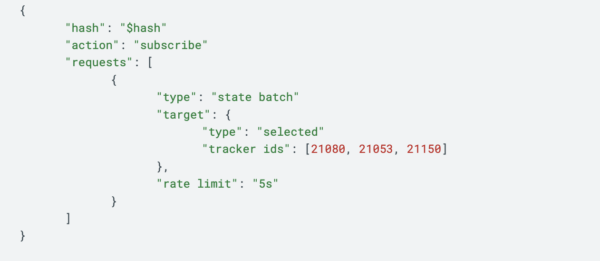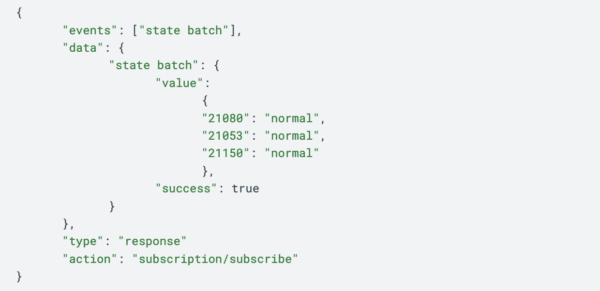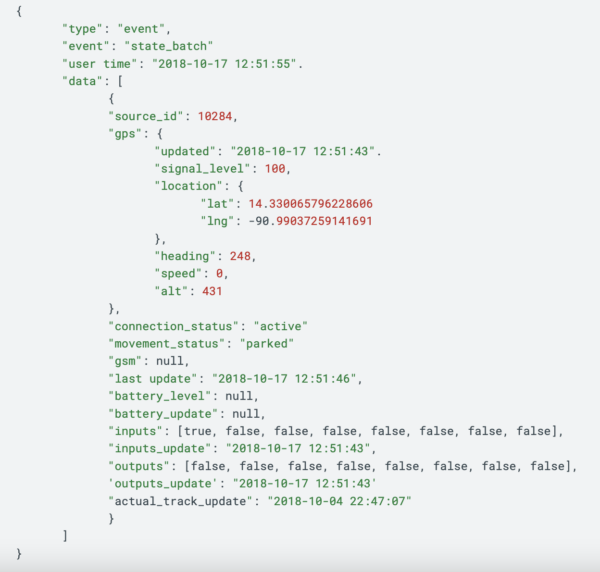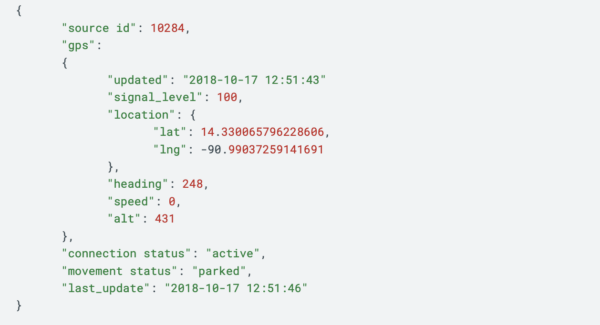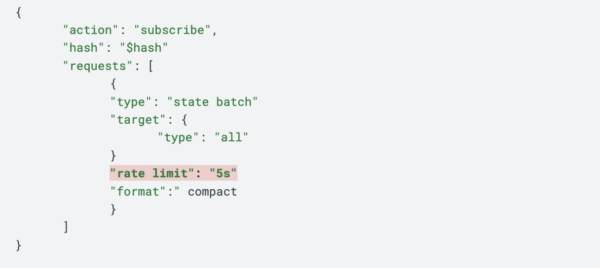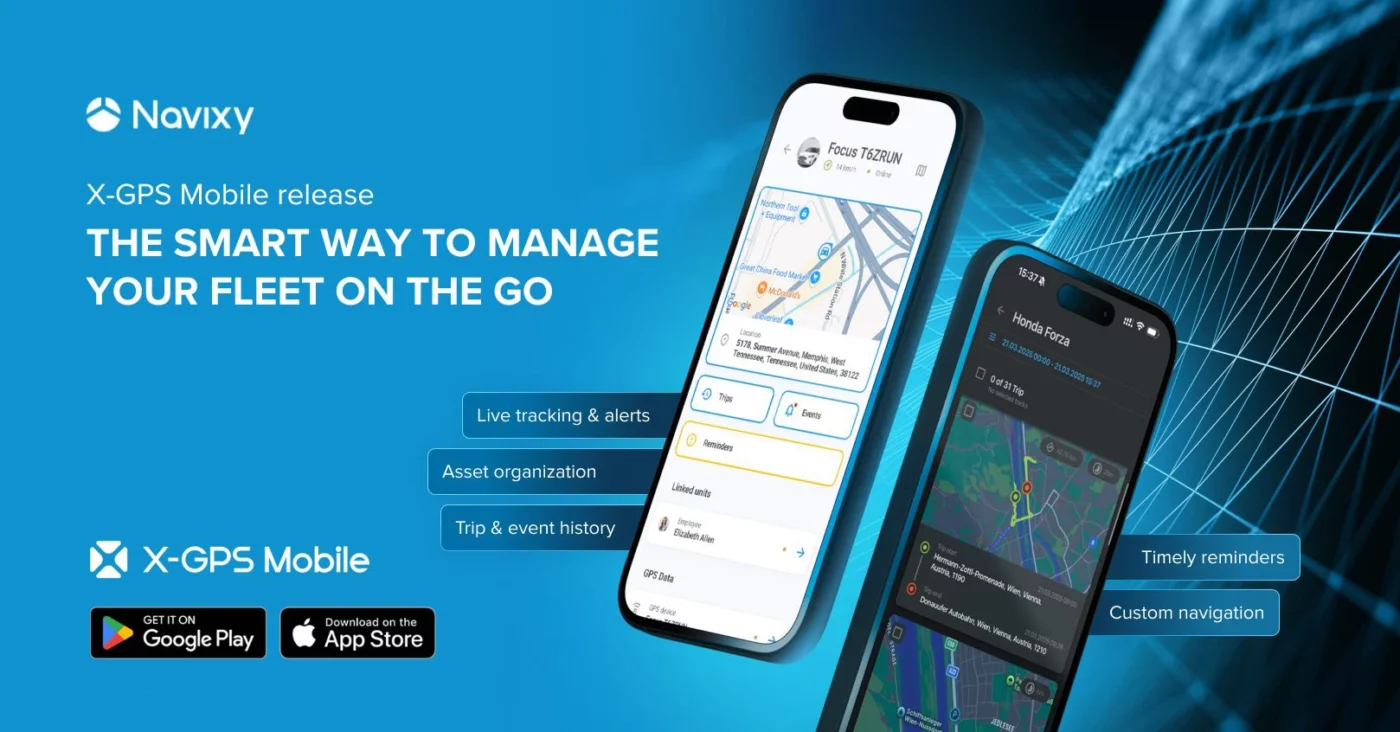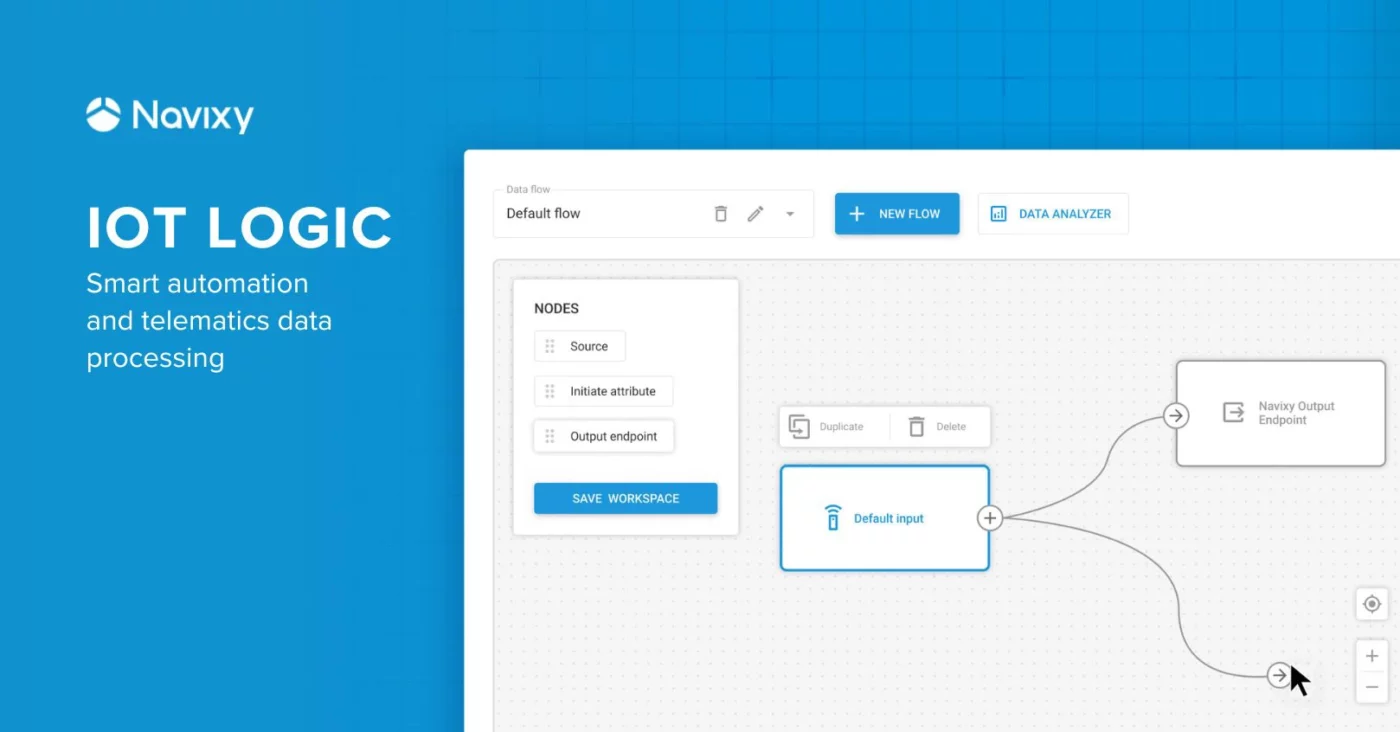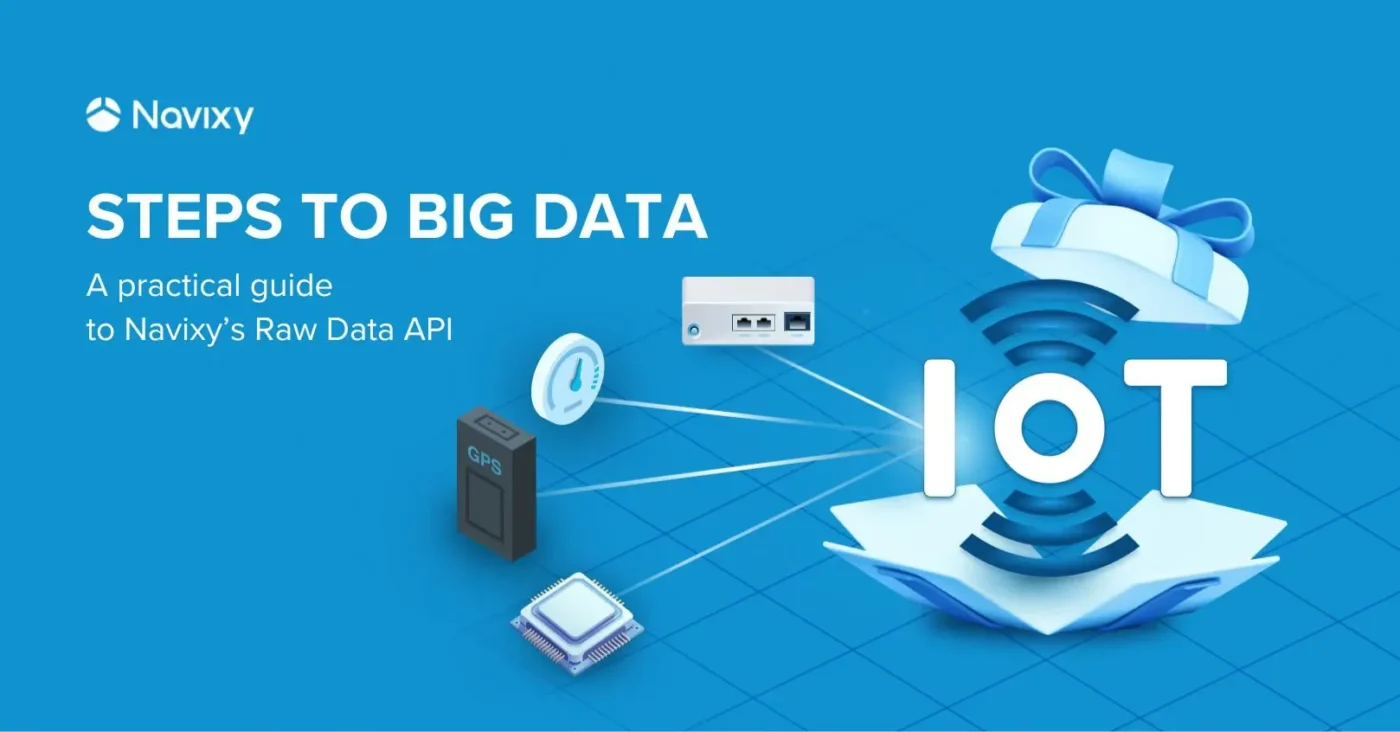As the world becomes more interconnected, the need for real-time data has never been greater. To meet this demand, the Navixy Websocket API emerges as a vital tool. In this blog post, we will dive into the dynamic and flexible nature of Navixy's Websocket API, uncovering its purpose, exploring various use cases, and providing compelling examples to showcase its capabilities.
Whether you're a GPS provider or an IT professional seeking to build efficient and responsive GPS and telematics systems, the Navixy Websocket API will be a game-changer. Let’s delve into the transformative potential of this cutting-edge technology and discover how it can empower your business.
What Websockets are and how this technology complements Navixy API suite
For those who may not be familiar with Websockets, it is a communication protocol that establishes persistent, full-duplex channels over a single TCP connection. Unlike traditional methods that rely on periodic polling, Websockets facilitate instant and simultaneous data transmission between servers and clients. The Navixy Websocket API utilizes this technology to enhance the development of GPS and telematics solutions by enabling real-time updates, seamless tracking, and prompt data delivery, helping you stay at the forefront of this industry.
The Navixy Websocket API excels in many scenarios that demand real-time data updates and instant event notifications. By enabling seamless, bidirectional communication and reducing network overhead, it facilitates developers to create more responsive applications with efficient data exchange. This, in turn, enables users to make more informed decisions and enhances their overall experience.
Here are the key advantages of utilizing the Navixy Websocket API in your projects:
- Real-time data updates
The Websocket API enables real-time data updates by establishing a continuous connection between the server and client applications. Unlike the REST API, which requires clients to send requests to fetch updates periodically, the Websocket API pushes updates instantly as they occur. For example, you could receive instant notifications on your mobile or web application whenever there's a change in the location or status of your tracked assets, without the need to constantly refresh or query for updates. - Simplified development
The Websocket API and REST API both provide programmatic access to Navixy's services but are designed for different scenarios. The Websocket API simplifies development by allowing clients to establish a persistent connection that remains active throughout the session. This enables real-time bidirectional communication between the server and client without the need for periodic polling. This eliminates complex request/response cycles, simplifies your codebase, and enhances overall application performance. - Flexible event subscription
The Navixy Websocket API allows clients to subscribe to specific events of interest. The Websocket API allows developers to dynamically manage event subscriptions, choosing the types of updates you want to receive, so you can focus on the events that matter most to your application, optimizing resource usage and minimizing unnecessary data transfers. - Richer event payloads
The event messages sent through the Websocket API often contain more comprehensive and detailed payloads compared to REST API responses, including GPS coordinates, sensor data, and device status. This comprehensive view helps developers promptly deliver critical information, enabling them to make informed decisions and ensure optimal asset and fleet management. - Reduced network overhead
With the REST API, clients typically need to send multiple requests to fetch data updates periodically. This can result in increased network overhead and unnecessary data transfers. In contrast, the Navixy Websocket API utilizes an event-driven architecture, where the server sends event messages to subscribed clients only when relevant updates occur. This approach reduces network traffic and optimizes data transfer efficiency. - Enhanced scalability
The Websocket API is well-suited for handling large-scale systems with a high volume of connected clients. It eliminates the need for clients to make repeated requests to fetch updates, which reduces the server load and enables efficient scalability. This makes it ideal for applications that require simultaneous tracking of numerous assets and real-time monitoring across a large fleet.
While the Navixy REST API remains a valuable tool for various use cases, the Navixy Websocket API excels in scenarios where real-time data updates, reduced network overhead, scalability, simplified development, flexible event subscription, and richer event payloads are critical requirements. By leveraging the advantages of the Websocket API, clients can build powerful and responsive GPS and telematics systems that meet their specific needs.
Real-world applications of the Websocket API: insights across industries
Let’s uncover the real-world applications of the Navixy Websocket API across diverse industries to gain valuable insights into its potential. The examples below provide a deeper understanding of how the API can enhance driver safety, prevent theft, streamline claims processing, optimize logistics operations, and improve field service management.
- Construction management
By implementing the Navixy Websocket API and utilizing geofencing, you can effortlessly ensure that your construction equipment remains within designated areas. This powerful combination allows customers to stay informed and receive instant alerts whenever any machinery ventures beyond the construction site, effectively preventing unauthorized use or potential loss. Such an application not only enhances the security of your valuable assets but also promotes efficient construction site management. - Transportation and logistics
With real-time tracking, clients can effectively monitor delivery vehicles, including their location, speed, and status as they navigate their routes. The Websocket API allows for timely notifications of any delays or deviations from the planned routes, empowering users to take proactive measures in managing delivery schedules and optimizing logistics operations. This application improves efficiency, enhances customer satisfaction, and ensures seamless fleet management that keeps your business running smoothly. - Car insurance industry
By enabling real-time tracking of insured vehicles and receiving immediate notifications in case of accidents or emergencies, insurance companies can streamline claims processing, accurately assess risks, and provide prompt assistance to customers when they need it the most. This feature ensures a seamless and efficient experience, so insurance companies deliver the support and service their customers deserve. - Field service management
With the Navixy Websocket API, businesses can effortlessly monitor the mobile workforce in real-time, keeping track of their locations and task updates. These capabilities help businesses enhance productivity and deliver exceptional service to customers.
Examples of data flows via Websocket API
The above examples showcase the versatility and applicability of the Navixy Websocket API in various industries. Now, let's delve deeper into the technical aspects of these use cases and explore specific examples. This will provide you with insights on how to leverage the Navixy Websocket API to elevate your app solutions and integrations.
Real-time speed monitoring and speed limit violation notifications
With the Websocket API, your application can obtain real-time vehicle speed data and receive immediate alerts for speed limit violations. This use case is crucial for insurance companies and fleet managers who prioritize driver safety and ensure compliance with regulations.
Unauthorized movement detection
Establishing geofences around specific areas is a common practice that enables the detection of any unauthorized movement of vehicles or equipment. With the Websocket API, your applications can receive instant notifications whenever a tracker crosses the designated boundaries, effectively deterring theft or unauthorized usage.
Monitoring equipment status
By utilizing the Websocket API, you can monitor the status of GPS and IoT sensors to receive timely updates. Common examples include tracking vehicle ignition status, machinery use, battery level, and cargo integrity. This use case is particularly valuable for businesses in logistics, supply chain management, or asset tracking, ensuring the safety and security of valuable assets.
In the Navixy ecosystem, the Websocket API serves as a communication hub that connects the Navixy platform with client applications. It integrates with different components of the Navixy platform, such as GPS tracking, notifications, reporting, and administrative features, to ensure a smooth flow of data between them. When your applications interact with the Navixy Websocket API, they become an integral part of the system, enabling swift data exchange and smooth user experience.
Exploring Navixy Websocket API in action
In the evolving GPS tracking landscape, professionals understand that location data alone is no longer sufficient. GPS devices, dash cams, and sensors produce a wealth of valuable real-time information that users actively seek. To meet this demand, the Navixy Websocket API goes beyond basic location updates, empowering developers with precise control over the data they receive. This is achieved through a range of settings including selective tracker filtering, flexible message structuring, and message rate throttling.
Selective tracker filtering
When subscribing to events, you have the flexibility to specify only the tracker IDs for which you need to receive data. This allows you to streamline your data consumption and focus on the information that matters most to your specific project.
Example of the response message:
Flexible message structuring
Depending on your requirements, you can choose between the full or compact message format. The full format provides detailed insights, including battery charge, input/output values, and data update time. On the other hand, the compact format offers a concise summary of the object's location and status, ensuring faster processing and efficient resource usage.
Example of a message containing detailed data:
Example of a compact message featuring the relevant data:
Response delay
Monitoring a large number of assets simultaneously can be challenging. To alleviate the computational burden, the rate_limit parameter allows you to control the frequency of receiving messages with up-to-date data. This feature enables you to strike a balance between real-time updates and system performance, ensuring a smooth and efficient monitoring experience.
With the help of these settings, system integrators can construct GPS/Telematics solutions that are customized to the specific requirements of each project. This involves meeting clients' expectations and optimizing application performance.
Conclusion
Real-time data is the key to making informed decisions and ensuring the safety, security, and efficiency of your assets and operations. The possibilities of Navixy Websocket API help developers reveal the full potential of their GPS tracking and Telematics solutions.
The Navixy Websocket API empowers telematics professionals to create more responsive, efficient, and feature-rich applications that deliver timely information and enhance the overall user experience. With Websocket API, users can track the exact location of their assets, receive sensor data, and monitor important metrics in real-time, providing an unparalleled level of situational awareness.
In terms of what lies ahead, Navixy maintains a steadfast commitment to enhancing the developer experience and advancing the functionality of the Websocket API. Future endeavors encompass optimizing API performance to handle larger data volumes, introducing additional data streams to enrich the real-time data exchange, and continually refining developer tools and documentation to streamline the integration process. These ongoing efforts reflect Navixy's dedication to innovation and ensuring a seamless and efficient experience for developers utilizing the Websocket API.
If you are considering the Navixy Websocket API for your next project, we invite you to start your free trial today. Stay tuned for insightful content from Navixy as we continue to empower businesses and developers with innovative solutions for GPS tracking and vehicle telematics.
